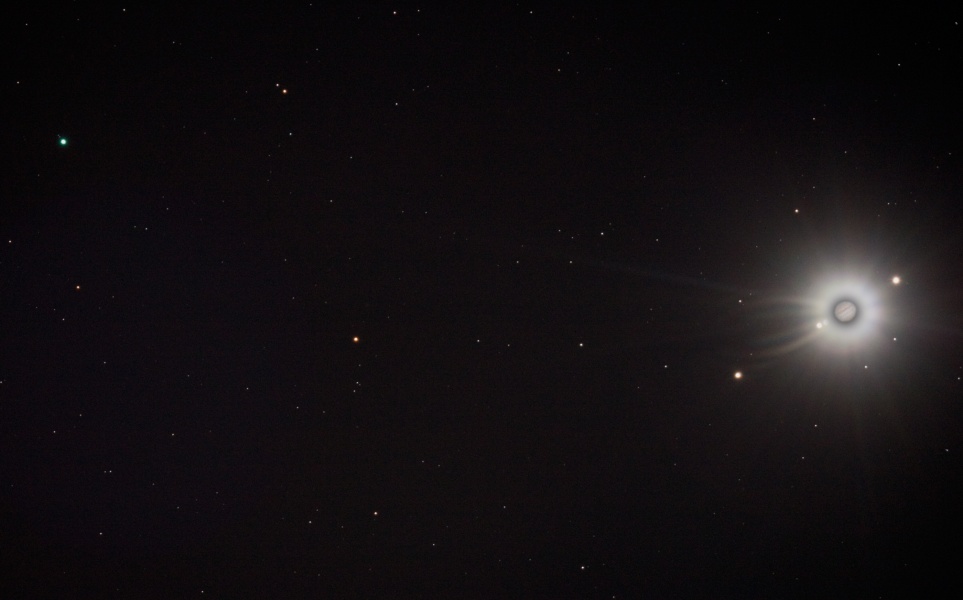How Far is Uranus?

Chilly Uranus lies far from Earth and the sun. Neptune is the only planet farther from either. More than a billion miles from the warmer bodies, the planet contains the coldest atmosphere in the solar system and an icy composition.
"I think poor Uranus is misunderstood, actually," planetary scientist Amy Simon said on NASA's Gravity Assist podcast. "Uranus is very bland in appearance most of the time. It's kind of a pale blue planet. It's the real pale blue dot."
How far is Uranus from Earth?
Because the solar system is in constant motion, the distance between Earth and Uranus changes daily. The closest the two get is 1.6 billion miles (2.6 billion kilometers). At their farthest, they are separated by 1.98 billion miles (3.2 billion km).
As such, the planet was one of the last to be discovered, as the smallest of the gas giants cannot be seen with the naked eye. In fact, it was the first planet to be found using a telescope. In 1781, Sir William Herschel was scouring the skies above England when he came across a new object. He originally identified it as a comet, but after significant observation, it was determined to be a planet. Originally, the astronomer wanted to name it for his patron, King George III, but it was ultimately christened after the Greek god of the sky and father of Saturn.
"If you were to go out and look [for Neptune], you'd have to know exactly where to look, and you'd still need a telescope to be able to find it," Simon said.
How far is Uranus from the sun?
Uranus travels in an elliptical orbit around the sun once every 84 Earth years. At its closest (perihelion), the distance to Uranus from the star is 1.7 billion miles (2.5 billion km); at its farthest (aphelion), 1.89 billion miles (3 billion km). On average, the planet travels about 19 times as far from the sun as Earth does.
Because Uranus lies so far from the sun, it receives very little in terms of light and warmth from the star. Its atmosphere is the coldest in the solar system, reaching temperatures as low as minus 371 degrees Fahrenheit (minus 224 degrees Celsius). Such frigid temperatures mean the planet is made up predominantly of ices rather than gas.
Breaking space news, the latest updates on rocket launches, skywatching events and more!
Simon said that temperature is a large part of the reason for Uranus' blandness. The ice giant doesn't have a lot of internal heat. In fact, it is the only planet that doesn't give off more heat than it receives from the sun, she said. That slows down the rise and fall of heat that would otherwise drive storms.
"You don't get the equivalent of thunderstorms. So, you don't see the bright clouds on Uranus that you see on the other planets," Simon said.
How long does it take to reach Uranus?
Traveling to another planet in the solar system is a bit challenging because the planets you want to visit are always moving around — and so is your starting location. Sometimes they line up ideally, but other times, visiting them may take a bit more effort.
For close planets such as Venus and Mars, waiting for the ideal circumstances may be a matter of months or a handful of years, but for distant planets like Uranus, with orbits that take nearly a century, it may mean waiting a few decades. To complicate matters, space agencies often take indirect routes, using gravitational boosts from other planets to accelerate crafts while minimizing fuel costs.
Only one spacecraft has made the trip to Uranus. Launched in August 1977, NASA's Voyager 2 flew by the planet on its way out of the solar system. It encountered all four gas giants, making its closest approach to Uranus on Jan. 24, 1986. This means it took just under a decade to reach the icy giant.
NASA discussed sending Cassini to Uranus after it finished studying Saturn, estimating it would take a decade to travel from one planet to the next. This was in addition to the seven years it already took to reach the ringed giant. Instead, the determination was made to keep Cassini in orbit around Saturn until it made a deliberate suicidal dive into the planet 2017.
NASA is currently studying potential future missions to either Uranus or Neptune in support of the next Planetary Decadal Survey. The results of the studies, along with the decadal survey, will be used to help determine NASA's planetary science priorities from 2022 to 2032. A 2017 study identified the scientific questions an ice giant mission should address, along with various instruments, spacecraft, flight-paths and technologies that could be utilized.
"This study argues the importance of exploring at least one of these planets and its entire environment, which includes surprisingly dynamic icy moons, rings, and bizarre magnetic fields," Mark Hofstadter, of NASA's Jet Propulsion Laboratory in Pasadena, California, said in a statement.
Follow Nola Taylor Redd at @NolaTRedd, Facebook, or Google+. Follow us at @Spacedotcom, Facebook or Google+.

Nola Taylor Tillman is a contributing writer for Space.com. She loves all things space and astronomy-related, and always wants to learn more. She has a Bachelor's degree in English and Astrophysics from Agnes Scott College and served as an intern at Sky & Telescope magazine. She loves to speak to groups on astronomy-related subjects. She lives with her husband in Atlanta, Georgia. Follow her on Bluesky at @astrowriter.social.bluesky
